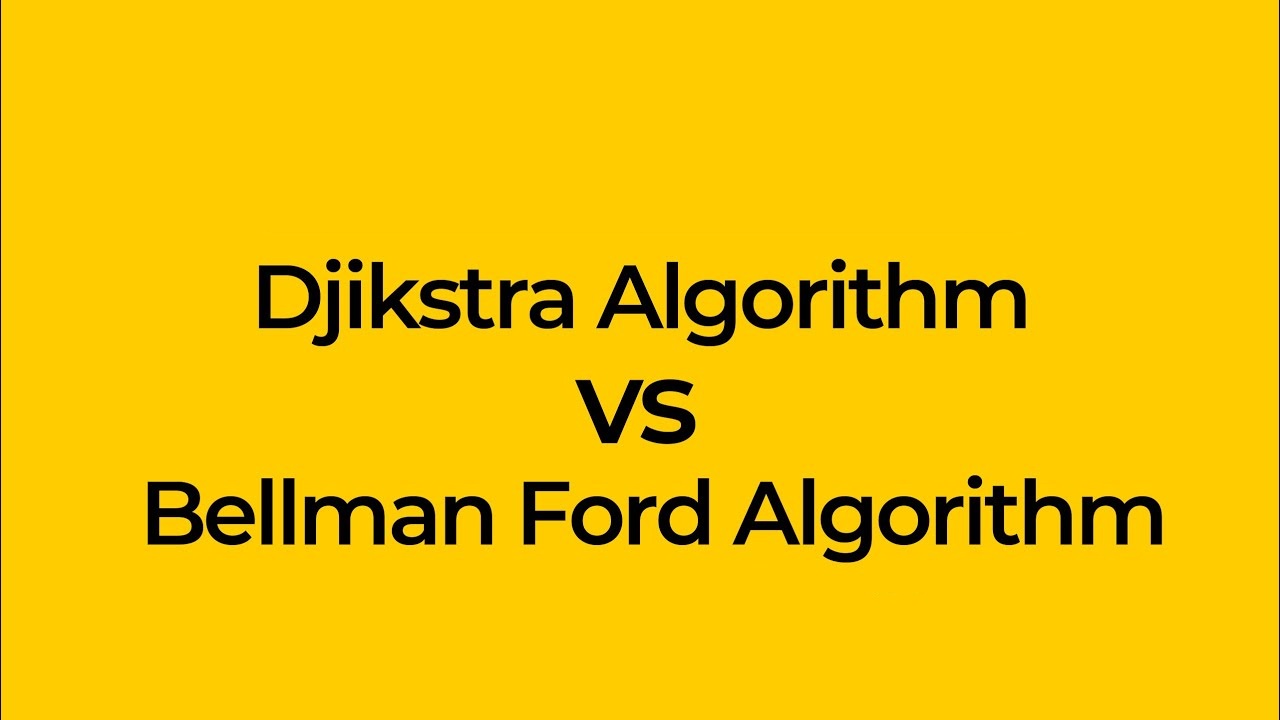Engineers or programming experts must know Dijkstra’s and Bellman’s Ford algorithms. But, even if you are unfamiliar with these algorithms, we are here to draw an ultimate comparison and difference between Dijkstra and bellman ford algorithms.
To ace any technical round in an interview, knowing the applications of Dijkstra’s algorithm and the Bellman-Ford algorithm is essential. Each algorithm’s approach and use case differs. So we will explain the similarities and differences in this guide on Dijkstra vs bellman ford.
To give you an overview of Dijkstra’s algorithm is used in many applications to find the shortest path between two crucial points. Similarly, the Bellman-Ford algorithm is also a graph algorithm that calculates the shortest path between two vertices.
As you can tell, they are similar, but we will emphasize each algorithm and explain in detail before we move ahead with the differences between Dijkstra vs bellman ford.
What is Dijkstra’s Algorithm?
The definition of the Dijkstra algorithm simply explains that it is one of the Single Source Shortest Path algorithms to find the shortest path from a source code to all the nodes of the weighted graph. The algorithm was proposed by Edsger Dijkstra in 1959 and is named after him.
Using the weights of the edges, Dijkstra’s method determines the best route by minimising the sum of the distances between the starting node and the rest of the nodes in the graph.
Dijkstra’s algorithm is used in real-world applications like transportation, computers, social networks, etc., where all the edge weights are non-negative. For example, a graph may depict a subway system, with nodes representing stations and showing the subway lines that link them.
Let us understand how it works. In theory, the Dijkstra algorithm starts from zero source code. Then, the origin node is added to a zero-cost priority queue.
A series of multiple steps follow, wherein, in each step, the nodes with the shortest distance and cost are determined, and the other vertices around it are removed. The procedure continues until no more nodes are left to extract from the queue and the shortest path is calculated.
What is Bellman-Ford Algorithm?
The main difference between Dijkstra and Bellman-Ford is that Bellman-Ford can compute and ensure a valid solution even if negative nodes are present in the weighted graph, something the Dijkstra method cannot do.
Richard Bellman and Lester Ford Jr developed the algorithm in the 1950s. The algorithm works well on weighted and unweighted graphs to find the shortest path between a given source vertex and all other vertices.
The Bellman-Ford algorithm can be used for mapping software like Google Maps. The Bellman-Ford algorithm’s central principle is to iteratively loosen the graph’s edges until the shortest path lengths are calculated. In the first step, all vertices’ distances are set to infinity except the source vertex, which is set to 0. Then, if a shorter path is identified, the distance to the target vertex is updated while the algorithm iteratively traverses the edges of the graph.
Having covered the background of the Dijkstra and Bellman-Ford algorithms, we can now compare their respective features and draw conclusions.
Difference between Dijkstra and Bellman-Ford Algorithms
In the article Dijkstra vs Bellman-Ford, we have listed below the significant differences:
| Parameter | Dijkstra Algorithm | Bellman Ford Algorithm |
| Weight Cycle | It works well with a non-negative weight cycle. | It can handle graphs with negative edge weights. |
| Graphs | Dijkstra’s algorithm is designed to work on directed and undirected graphs. The only requirement is that it should have non-negative weight edges. | In the case of Bellman-Ford, although it can handle both directed and undirected graphs, it works best with directed graphs with negative weights. |
| Applications | In real-world applications, Dijkstra’s algorithm is used in transportation like subway and road GPS navigation systems. | It is commonly used in network routing protocols. |
| Time Complexity | This algorithm is less time-consuming. The complexity of Dijkstra’s method is O((V + E) * log V). | Bellman Ford’s algorithm is very time-consuming. The complexity of Bellman-Ford is O(V * E). |
| Implementation | Dijkstra’s algorithm cannot be implemented in a distributed way quickly. | In contrast, the Bellman-Ford can be easily implemented in a distributed manner. |
| Approach | The method is implemented with a Greedy Approach. | The algorithm is implemented using Dynamic Programming Approach. |
| Result | The output includes vertices with entire data about the network, not only the other vertices to whom they are linked. | The output contains the vertices, which in turn have information on the other vertices to which they are related. |
| Scalability | It is scalable. | It is relatively less scalable than Dijkstra’s algorithm. |
After accurately understanding the comparisons between Dijkstra vs. Bellman-Ford, gaining an in-depth understanding and knowledge of the programming languages is essential. Comprehending how the algorithms work in each calculation and application is crucial. So, expanding your technical knowledge and skills with a certification course in software development with a reputed online course provider is necessary.
The certification course will go beyond the basics and help you advance your career in mobile software development. It will also help you apply the applications in your daily lives with different examples and case studies.
An applications software developer in India may make up to Rs. 9,50,000 per year if they have gained the necessary experience and certification. Companies like Accenture and TCS offer seniors a salary of up to Rs. 17 lakhs.
Conclusion
In conclusion, both algorithms are powerful and practical tools used to find the shortest path in a graph. In the article on the difference between Dijkstra and Bellman-Ford, we can say that Dijkstra’s approach is quicker for graphs with non-negative edge weights. Still, Bellman-Ford can handle negative edge weights and find negative cycles. If you know how these algorithms vary, you can pick the one that works best for your application and speed up your path-finding processes.




